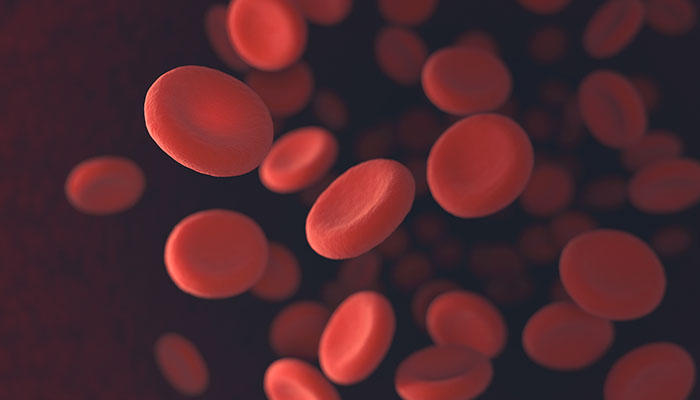The growth in regenerative medicine provides many newer treatment options for patients suffering from chronic pain without relying solely on medications. Therapies like platelet-rich plasma (PRP) treatment can help trigger your body’s ability to heal itself in amazing ways.
A platelet-rich plasma injection is one method to support an expedited healing process for a wide range of injuries. This is especially important for patients recovering from serious accidents or incidents that require long-term therapy, or those who suffer from chronic pain. Common examples of chronic pain include someone who is treated with a platelet-rich plasma injection for their knee or shoulder arthritis.
While PRP helps many patients, be sure to discuss whether this is the right option with your provider and understand that the ability for a platelet-rich plasma injection to prevent or limit pain, may differ from patient to patient.
A definition of platelet-rich plasma therapy
Platelet-rich plasma injection is a process where a high concentration of a patient’s platelets are injected into the area of the body where an injury occurred or where chronic pain is present. Platelets are small cells that live in a person’s bloodstream. They form healthy blood clots where an injury has occurred, allowing them to release growth factor proteins that start the healing process, potentially repairing the damage.
Generally, a PRP procedure is handled as an outpatient situation where blood is drawn, properly prepared, and reinjected at the targeted site of the body. A local anaesthetic is often used at the injection site to help blunt any short-term pain from the injection. Some PRP procedures may require an ultrasound or endoscope to help confirm the injection location.
The level of impact on a patient will vary. It is not considered a “fix” as we would normally think of a surgical procedure. A platelet-rich plasma injection is the first step in a natural, regenerative process that will often show positive results anywhere from a few weeks to several months. It is common for the treatment area where an injection was received to be painful and swollen for the first few days, but that dissipates quickly.
However, one of the questions our team will frequently get after a procedure is completed is, how long does a PRP injection last?
There is no “normal” for answering how long a platelet-rich plasma injection lasts
Like you, our team at Krasnick is hopeful that short-term relief will be achieved from your pain and suffering following a platelet-rich plasma injection. It should be noted that finding reliable information on how long these treatments remain effective is difficult to quantify, and that much of the research is still new. Sometimes the treatments work temporarily, and repeated injections are needed every few months. Others may respond for longer periods and an injection may not be needed in the foreseeable future.
When asked how long does pain relief last after a PRP injection, the answer is similar. In many cases, pain relief can last for months. Both the severity of the injury and the nature of the chronic pain play a role in the long-term effectiveness of a PRP injection. So, while we should be able to provide some generalities here, it should be noted that every individual responds differently to this type of treatment and every situation is different. That’s why being in regular contact with your Krasnick team of professionals and being transparent about how you are feeling, is a critical part of the long-term care plan.
Common injuries where PRP injections should be considered
Again, discussing the best options for your pain relief should be an ongoing process with your team of Krasnick regenerative medicine professionals. Results of some research studies help to provide an idea of when the treatment might be most appropriate.
One common reason to get a PRP injection is: To treat tendon injuries, including a rotator cuff issue, a variety of elbow and knee injuries, plantar fasciitis, tendonitis, and more. These tendon injuries often are difficult to treat and can cause pain for an extended period. PRP injections can be specifically effective for shoulder arthritis and knee pain.
Another area where a platelet-rich plasma injection can relieve pain is with soft tissue and ligament injuries. Although, some studies have indicated that while healing time is often sped up, the recovery process and effectiveness of a PRP injection is more variable from patient to patient.
PRP injections may also help cartilage regenerate, making it a potential alternative for patients who prefer to stay away from steroid injections. However, the science is less certain here on the long-term impact.
One of the clear advantages of platelet-rich plasma therapy is that there are rarely any side effects because the patient’s blood is part of the treatment. The only side effect often is a temporary reaction at the injection point, such as minor pain and swollen skin, but this often disappears after a few days.
Take the next step to see if PRP may be an appropriate treatment for your pain
The process of relieving your chronic pain starts with visiting the professionals at Krasnick Regenerative Medicine. Our team can determine if platelet-rich plasma therapy should be an option given your situation. Dr. Robert Krasnick and his team will consider all treatment options.
Set an appointment by filling out our online form or calling 734-585-5653. There is no charge for a consultation. Live your best life with the help of Krasnick Regenerative Medicine!

